Laurie's Blogs.
Dec 2019
Going out with the dog… Do You Need a Ramp, Stairs, or What?
Pet owners find it difficult to get their older or debilitated large-breed dogs in and out of vehicles. It’s a common concern for pet parents. Often as rehab professionals, we’re asked what we’d recommend in regards to ramps or stairs to help people help their dogs in and out of the vehicle, or up and down off of the couch or bed. So, here’s a quick listing of some options that my clients have found useful and where there have been concerns as well.
TRUCKS & SUVs
Let’s start here. For most Sports Utility Vehicles (SUVs), it’s the big dogs that seem to need the most assistance. Little dogs – lift and go. But the big ones are more of an issue.
So, when owners are looking for and asking about ramps, the key features to keep in mind are sturdiness and width. A narrow, plastic ramp won’t cut it. The dogs don’t feel safe and they simply won’t use it. Or worse, they try to jump over it or off of it. Here are some ramp options I found that ‘look good’ to me.
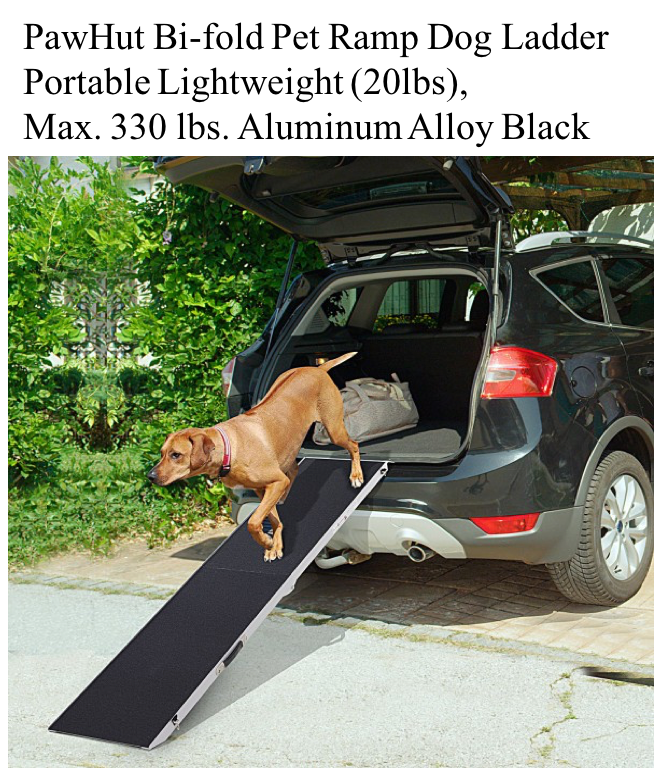
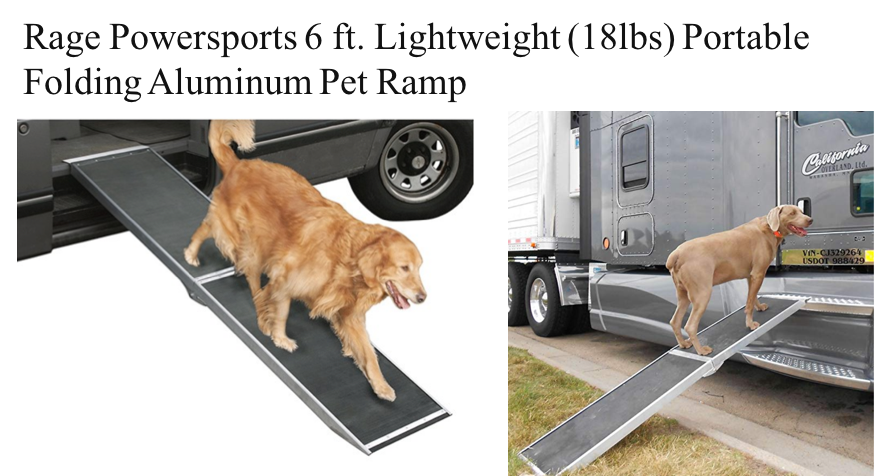
You might also want to take into account the angle that the ramp makes. A steep angle ramp is harder to get up and navigate than a set of stairs. I googled the ideal ramp incline. I remember that I learned what it should be back in PT School… but my memory is failing me. Hooray for google. Maximum slope for hand-propelled wheelchair ramps should be 1" of rise to every 12" of length (4.8 degree angle; 8.3% grade). Maximum slope for power chairs should be 1.5" rise to 12" length (7.1 degree angle; 12.5% grade). Minimum width should be 36" (inside rails) - (48" is ideal).
So, none of these ramps actually meet that criteria. The only way that you can (get a nice gradual slope in a practical manner, is if you are trying to get a dog into the side of your minivan. Otherwise, the length of your ramp will be ridiculously long! The other factor to consider is the weight of the ramp and is it easy for the owner to use.
To be quite frank, I’m now more inclined to recommend the steps… but not just any steps. Again, you will not find a big dog that is willing to go up and down steep plastic steps. Here are my favourites.
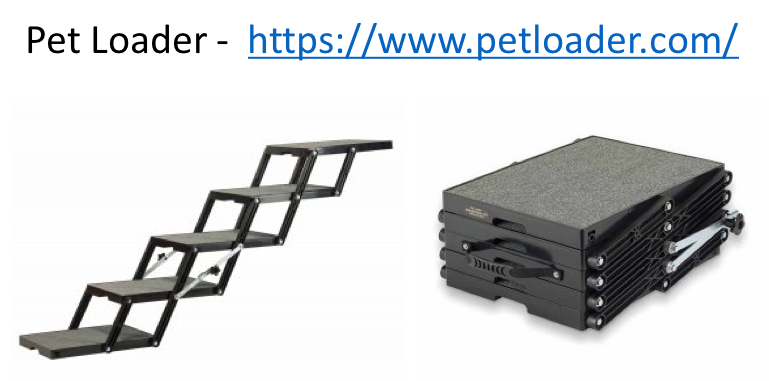
With the design above, owners can purchase a model with 3-steps, 4-steps, or 5-steps. Check out their website. They’ve done a good job of showing how to choose which model is best. The major downside to this model is cost. However, it’s the one I feel most comfortable recommending.
The other option is a step or platform that can be mounted under the back of the vehicle that uses the hitch to secure it in place. It’s called a Twist Step.
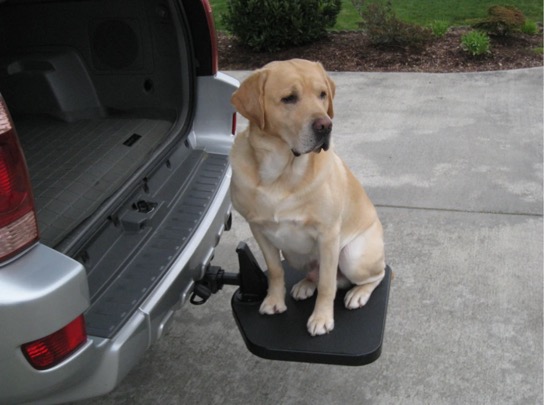
I’ve also had clients make a wooden ‘nesting’ boxes with grippy surfaces on the tops for their dogs to use. And of course, there is the old standby trick of parking up against a hill to help the dog as well! But we don’t all live in proximity to a good hill. In that case, the suggestions above might just do the trick.
SOFA & BED OPTIONS
Now, in this scenario, we’re likely talking about the little dogs that you are wanting to create a ramp or stairs for. However, fair warning, right off the bat. Very few dogs will ever use them unless they were introduced to them as a puppy! I’d say if you have a small dog and the owner allows it onto the bed or couch, encourage the owner to purchase and teach stairs up AND DOWN right from the get go!
What is important as well is the rise of the steps. Again… google helped me out!
Rule one says that rise plus run (r+R) should equal 18 inches. Why? That’s what most people find to be a comfortable stride on most stairs.” A 10-inch (or 25-centimetre run) ... makes for more comfortable, safer stairs. Some building groups, however, go further, including the Canadian Mortgage Housing Corporation which advocates for a tread depth no shorter than 28 centimeters (or 11 inches).
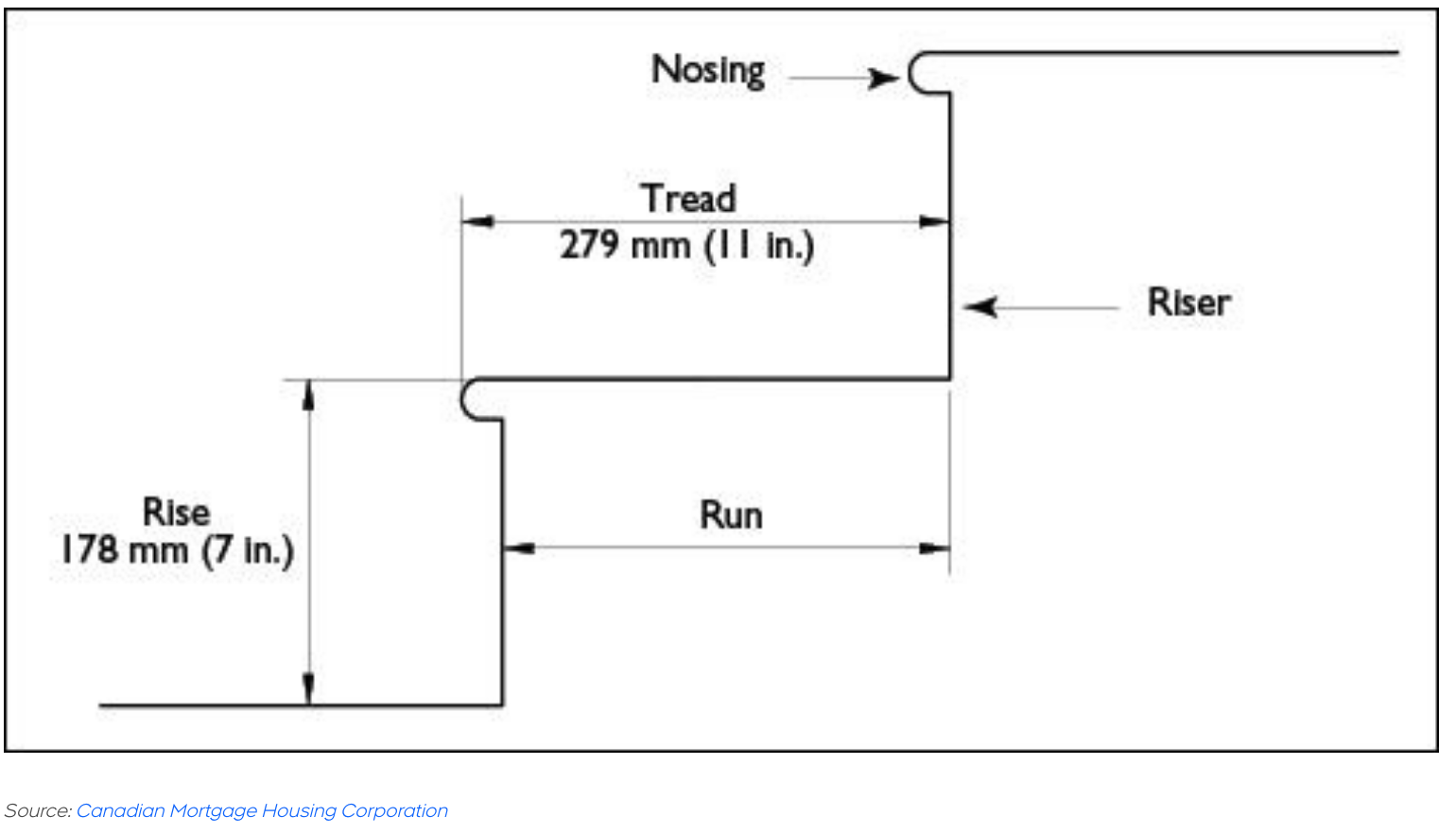
That’s great for people. I think we need to realize that when using steps we need to remember that dogs are longer than they are tall and so a longer step and a shorter rise makes even more sense. Refer to the Pet Loader image below to wrap your head around that.
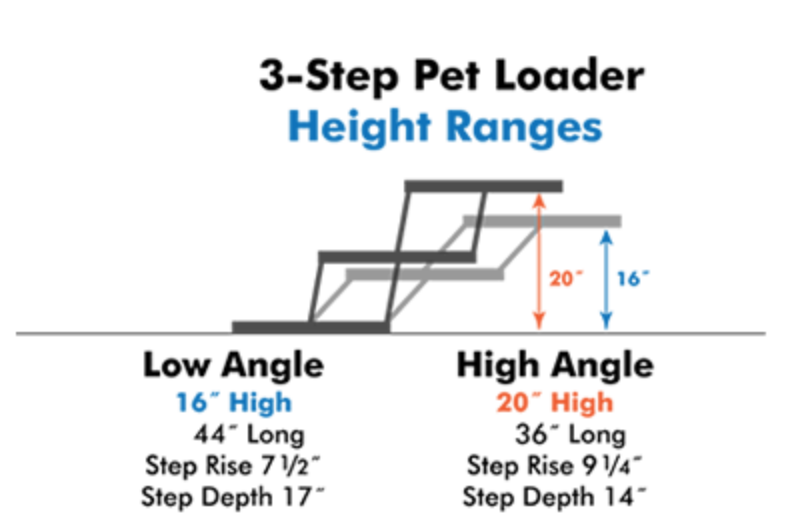
As such, when looking for steps for a couch or bed, take this into account. A dog is more likely to use stairs that are more comfortable and less steep. For this purpose, there are many on the market. I’d have the owners look around the internet themselves and keep the above information in the back of their mind. And of course, train the dogs as puppies to use them! In the case of the older dog that has jumped onto and off of the bed or couch for its entire life, and there is no changing that, I’d have to say, you won’t get him or her to use steps or a ramp now. So, put the mattress on the floor. Take a cushion off the couch and place it on the floor in front of the couch (to use as a platform or landing pad and/or make one section of the couch ‘shorter’. And for their next dog, train it as a puppy!
On that note, I hope this helps you to help your dog owners to make a wise choice when it comes to steps or stairs for their four-legged companion!


